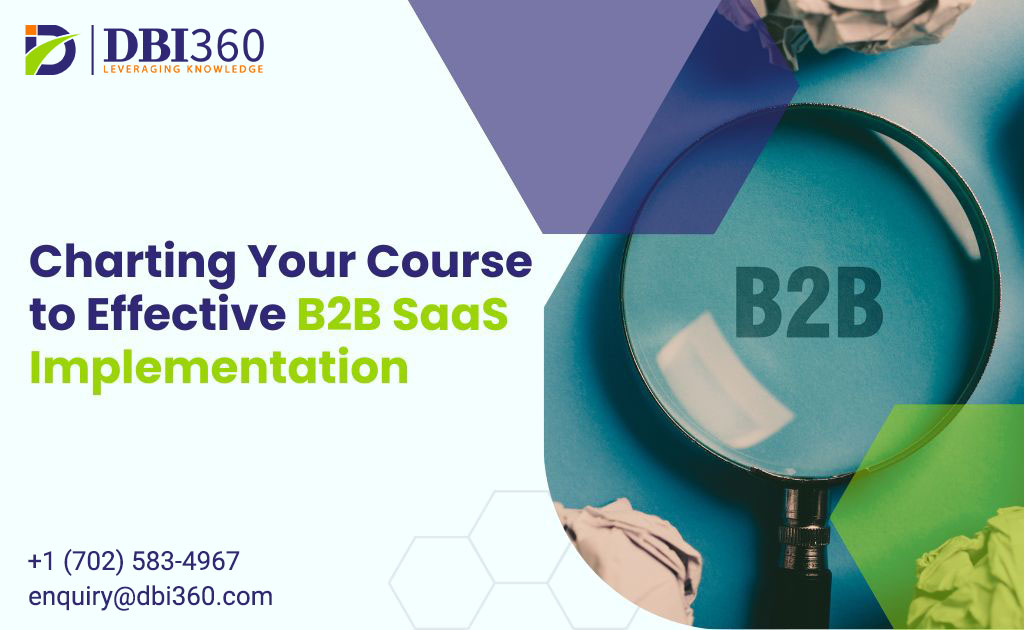In today’s fast-paced business landscape, B2B Software-as-a-Service (SaaS) solutions have become integral for organizations seeking efficient and streamlined operations. However, B2B SaaS implementation is not simply a matter of purchasing a software license.
It requires careful planning, collaboration, and a well-defined roadmap to ensure a successful implementation. In this blog, we will explore the key steps and considerations involved in the B2B SaaS implementation process, providing you with a roadmap to guide your organization towards a seamless and effective adoption of your chosen SaaS solution.
#1 Define Objectives and Evaluate Needs:
Before embarking on any B2B SaaS implementation, it is essential to clearly define your objectives and evaluate your organization’s needs.
Conduct a thorough assessment of your current processes, pain points, and desired outcomes.
This evaluation will enable you to identify the specific functionalities and features required from a SaaS solution, ensuring a tailored implementation that aligns with your business goals.
#2 Select the Right SaaS Provider:
Choosing the right SaaS provider is a critical step in the implementation roadmap. Thoroughly research and evaluate potential vendors based on factors such as their reputation, track record, security measures, scalability, and customer support.
Engage in discussions with the shortlisted providers, seeking clarity on their offerings, customization options, data migration processes, and integration capabilities.
Selecting a reliable and compatible SaaS provider will set the foundation for a successful implementation journey.
#3 Develop a Comprehensive Implementation Plan:
A well-crafted implementation plan is vital for a smooth and efficient deployment of your chosen B2B SaaS solution.
Define a timeline, set realistic goals, and outline the specific tasks and responsibilities for each phase of the implementation.
Consider factors such as data migration, system integration, user training, and change management strategies.
Collaboration between your organization’s stakeholders and the SaaS provider is crucial during this stage to ensure alignment and clarity on the implementation process.
#4 Data Migration and System Integration:
Successful data migration from legacy systems to the new SaaS solution is a critical step.
Evaluate the compatibility between existing data formats and the SaaS solution, and work closely with your IT team and the SaaS provider to plan and execute a seamless data migration process.
Additionally, consider system integration requirements with other existing software tools or platforms. Smooth integration of the SaaS solution with your existing ecosystem is essential for data flow, automation, and optimized workflows.
#5 User Training and Adoption:
Effective user training and adoption strategies are key to maximizing the benefits of your B2B SaaS solution.
Develop a comprehensive training plan that addresses the specific needs of different user groups within your organization.
Collaborate with the SaaS provider to organize training sessions, webinars, or online resources tailored to your solution.
Encourage user engagement, provide ongoing support, and foster a culture of continuous learning to ensure successful adoption of the SaaS solution across all departments.
#6 Monitor, Evaluate, and Optimize:
Once the B2B SaaS solution is implemented, the journey does not end. Continuous monitoring, evaluation, and optimization are crucial to ensure that the solution remains aligned with your organization’s evolving needs.
Establish key performance indicators (KPIs) and metrics to measure the effectiveness and ROI of the implemented solution.
Regularly review these metrics, solicit user feedback, and collaborate with the SaaS provider to identify areas for improvement and optimize the solution’s performance.
The Bottom Line
Implementing a B2B SaaS solution requires careful planning, collaboration, and adherence to a well-defined roadmap. By following the key steps outlined in this implementation roadmap, your organization can navigate the complexities of the process and ensure a successful deployment of the chosen SaaS solution.
Clear objectives, selecting the right provider, developing a comprehensive plan, seamless data migration, effective user training, and ongoing optimization are the pillars of a successful B2B SaaS implementation. Embrace the roadmap, harness the potential of your chosen SaaS solution, and empower your organization with the efficiency and scalability required to thrive in today’s dynamic business landscape.

